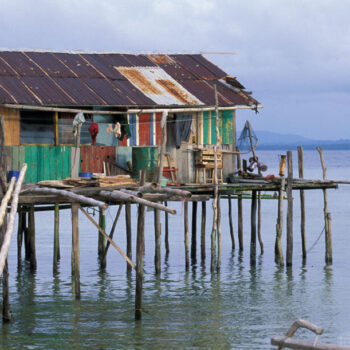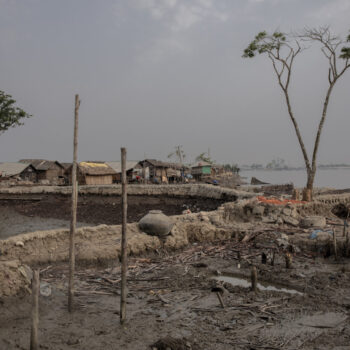The African Development Bank (AfDB) has begun a public consultation on its new policy on water. The policy will replace the Bank’s Integrated Water Resource Management (IWRM) policy of 2000.
The Bank has defined a new vision for the water policy, aspiring to achieve a water secure Africa where there is equitable and sustainable use and management of water resources for quality socio-economic transformation.
The vision is further elaborated on in the Bank’s goal to foster water availability and security throughout its regional member countries (RMCs) and to accelerate green and sustainable growth through its lending operations in the water sector.
The subsequent objectives present concrete action points that the Bank intends to implement:
- To promote the attainment of a minimum platform of water security in RMCs and sub-regional groupings. The policy will concentrate on areas of fragility. [Note- it would be useful to clarify what AfDB means with ‘a minimum platform’.]
- Assist RMCs and sub-regional groupings in harnessing and sustaining the productive potential of their water resources in support of their national and regional development agendas.
The policy is further guided by principles on water as a fundamental aspect of sustainable growth, the importance to ensure equitable growth in a social and economic context, promoting equitable access to serve the SDGs and the awareness of water as a transboundary issue across RMCs.
Summary Recommendations
The policy…
- should acknowledge climate change as a central issue affecting its lending throughout the entire water sector.
- needs to include a thorough risk assessment for climate vulnerability, including the possibility to exclude projects from eligibility without water management plans or that are deemed high risk in the water context. In addition, wastewater and sanitation project appraisals need to include a feasibility process for mitigation potential.
- should explicitly mention the communitarian value of water for local communities and indigenous people, as well as its integral role to preserve ecosystems throughout the African continent.
- should be explicitly linked and integrated into AfDB’s existing approach to adaptation and climate resilience, cementing its leading role in this field.
- should include stronger references to nature-based solutions, biodiversity and cooling.
- should explore alternative financial instrument in its water policy, that could crowd in investment in the sustainable, ecologically responsible development and management of the blue economy.
- should take insights from fellow MDBs, who E3G has identified as leaders in the integration of climate change considerations into water sector lending. This would be specifically the Water Operational Plan of the Asian Development Bank and the Water sector policy of the World Bank.
Detailed Review
Vision and objectives
E3G recommends adding to the water vision statement the following: “under the preservation and restoration of ecological integrity of water resources both as an objective in itself and as being necessary to underpin the other objectives.”
The objectives could further be refined by including a separate objective that acknowledges the communitarian value of water for local communities and indigenous people, as well as its integral role to preserve ecosystems throughout the African continent, and the Bank’s role to protect these two aspects.
Adaptation and Climate Resilience
Despite contributing the least to the climate emergency, Africa will be amongst the most severely affected regions of the world. This is especially true for the water sector, with the risk of droughts, irregular floods and sea level rise significantly increasing in the coming decades.
The effects of climate change are acknowledged throughout the policy, which is an improvement to the IWRM policy. However, references to the vulnerability and need to address climate resilience in the water context are less explicit.
AfDB has already recognised climate risks in various strategy documents, such as the Bank Group Climate Risk Management and Adaptation Strategy (CRMA) and the AfDB Group Strategy for Addressing Fragility and Building Resilience in Africa. A stronger focus in the policy on the climate risk challenge for the African water sector would be highly desirable. In concrete terms, the water policy should:
- Provide a stronger cross-reference to AfDB’s strategic frameworks on adaptation and resilience recognising the current and especially future challenges due to the impact of climate change on the water sector. The water policy could function as a guideline, implementing the high-level goals of adaptation and resilience into a sectoral context.
- Make use of the Bank’s leading position on resilience and adaptation finance, by pushing for further ambition and embedding of this strength, by integrating the Africa Disaster Risk Financing (ADRiFi) programme in the policy and piloting the Adaptation Benefit Mechanism in the water sector. Given the difficulty of channelling international climate finance into mitigation and adaptation projects at parity, the water policy should also function as a pipeline incentive to feed into the demand of more bankable adaptation projects.
- Go beyond the integration of “the impact of climate change on water resources […] and [risk] mitigation measures” in the risk assessment of water sector projects. The policy should exclude projects that either do not sufficiently address the climate-related risks or do not provide an extensive plan for sustainable water management in the project context (Between 2005 and 2016, 58% of the Bank’s funded agriculture loans and grants did not include a water management component). In addition, loans that are subject to increased risk due to an insufficient water management component or high-water usage of a project, should reflect this in their capital cost structure and risk appraisal. Water-efficient, lower risk projects should be incentivized through improved capital conditions.
- Address climate vulnerability for water in projects that are not explicitly part of the Water and Sanitation sector of the Bank. This does, for instance, cover cooling needs of thermal power plants (see Cooling), inland shipping and water-intensive farming.
Sanitation and Mitigation
On sanitation, the policy should reference innovative solutions to ensure broad access to sanitary facilities that are sustainable. As such, AfDB should specifically invest in new technologies that reduce water and energy usage, such as waterless toilets and other facilities.
The policy should also refer to the potential of water projects to reduce greenhouse gas (GHG) emissions from wastewater and sewages. With sanitation and wastewater treatment being a core issue throughout the African continent, an early assessment for mitigation potential in such projects could make use of synergies.
Cooling
With significant temperature rise highly likely throughout the African continent and especially in the sub-Saharan region, the need for cooling is set to grow. Old and inefficient cooling technologies increase stress on energy demand and is a significant contributor to greenhouse gases (GHG).
Sustainable cooling offers a rare win by mitigating climate change, supporting adaptation, and enabling sustainable development. It is estimated that 359 million people in Africa face significant risks due to a lack of access to cooling. This includes access to space cooling, refrigeration and other forms of cooling that can protect food, vaccines, labour productivity and overall public health.
Sustainable cooling also provides an opportunity for supporting progress across three major international agreements: the Paris Agreement; the Sustainable Development Goals and the Kigali Amendment to the Montreal Protocol. Yet, recognition of the importance of cooling in the water policy is relatively limited.
E3G therefore recommends acknowledging the need for sustainable cooling solutions in the water policy (beyond the mentioning on page 9), since the Bank can also ensure sustainable water use across all cooling requirements, including for domestic purposes, buildings, cooling of power plants and other industrial processes.
There is also a role for nature-based solutions to provide urban cooling and protect local water supplies and prevent flooding, with co-benefits to climate adaptation, mitigation, water management and biodiversity preservation. For instance, increased tree and vegetation cover can lower surface and air temperatures through evapotranspiration and through the provision of shade. It also enables enhanced stormwater management and water quality through natural runoff, absorption and filtration processes.
Biodiversity and Nature-based solutions
The policy should strongly embrace important role of biodiversity (currently mentioned twice) and nature-based solutions (no mentioning) and ecosystem services in the water sector. In concrete terms, the policy could recommend the setting of ecological objectives as part of River Basin Management Plans and refer to the crucial role of nature-based solutions for coastal protection (which is covered in the water policy with respect to green infrastructure), e.g. through mangrove forests.
Likewise, the protection of biodiversity is paramount not just as a protection of the African natural heritage, but also as a vital source of income for coastal communities (see Blue economy).
Projects that fall under the water policy, as well as in other sectors, should therefore include a risk assessment for biodiversity loss in the water context. Furthermore, any project development exercise related to or close by coastal and fresh waters should include a scoping for potential nature-based solutions to mitigate project risks and increase resilience.
Blue Economy
The water policy, being a forward-looking strategic document does very little to address the importance of the emergent concept of the blue economy. In the African context, the Blue Economy is estimated to add value of $24 billion annually, equal to 1.26% of African GDP. Protecting and developing the African blue economy in a sustainable manner should therefore be a central aspect of the Bank’s water policy.
In recognition of the blue economy as a vital and highly investable sector for international financial markets, the Bank could play a first mover role and aim to guide economic development with a strong environmental and climate change focus (precautionary principle).
Furthermore, the blue economy could also play a role for the Bank in terms of raising capital, given the recent issuances of sustainable blue bonds, attracting a wide interest from actors on the international financial market. Here, the Bank could act as a facilitator, which would also offer potential cooperation incentives with other multilateral finance institutions.
A strong statement on the importance of the blue economy as part of the water policy of the AfDB would be an innovation and a strategic positioning for the development in the green, climate and blue finance markets in the coming years.


